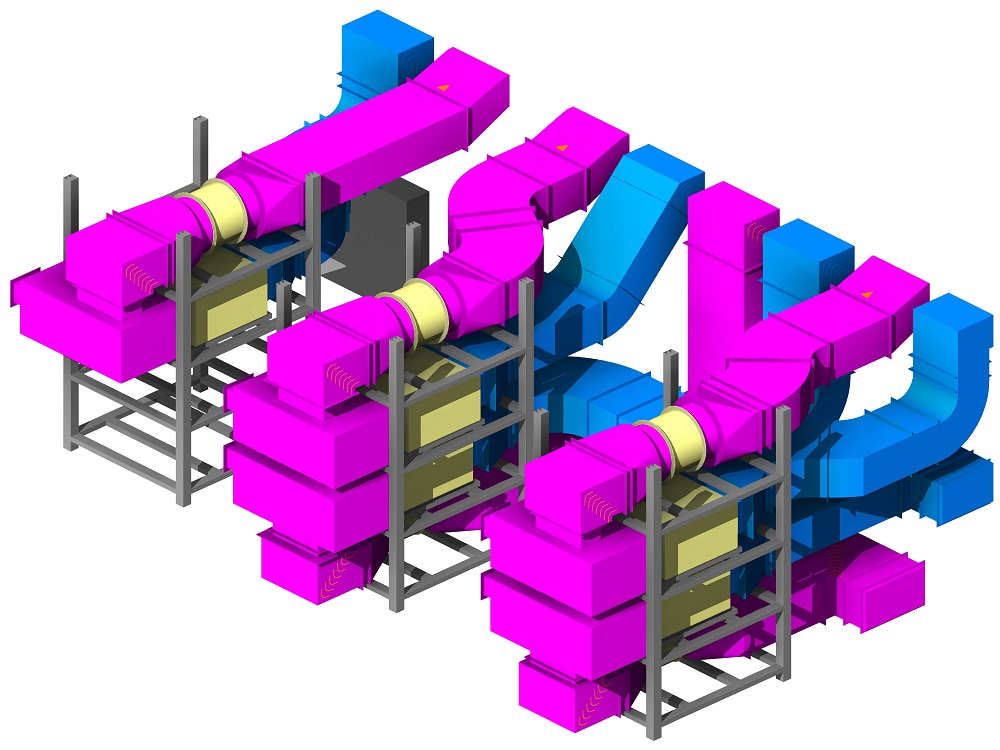
In the ever-evolving landscape of design and innovation, one concept has been gaining significant attention for its ability to combine efficiency and creativity seamlessly: modular design. Breaking away from traditional, linear design processes, modular design empowers creators to build versatile, scalable, and customisable solutions. This blog explores the essence of modular design, its benefits, and its impact on various industries.
Understanding Modular Design:
At its core, modular design involves creating a system or product composed of independent, interchangeable modules. These modules, often referred to as building blocks, can be combined in various configurations to meet different requirements. Think of it as assembling pieces of a puzzle, where each piece serves a specific function but contributes to a larger, cohesive whole.
Benefits of Modular Design:
Flexibility and Adaptability:
Modular design excels in adapting to changing needs. With interchangeable modules, designers can easily modify, upgrade, or replace components without overhauling the entire system. This adaptability ensures longevity and relevance in an ever-changing technological landscape.
Cost-Efficiency:
Traditional design processes often require significant resources and time to create new products or make adjustments. Modular design streamlines this process by enabling the reuse of existing modules. This not only reduces development costs but also accelerates time-to-market, a crucial factor in today’s fast-paced industries.
Scalability:
Whether designing a small consumer product or a complex industrial system, scalability is a key consideration. Modular design allows for easy scaling, as additional modules can be integrated to enhance functionality or accommodate increased demand. This scalability is particularly valuable for businesses experiencing growth or diversification.
Enhanced Creativity:
Modular design encourages a more creative approach to problem-solving. Designers can focus on perfecting individual modules, fostering innovation and pushing the boundaries of what’s possible within each component. This results in products that are not only functional but also showcase a high level of creativity and ingenuity.
Applications of Modular Design:
Technology and Electronics:
The tech industry has embraced modular design with products like modular smartphones and computers. Users can upgrade specific features without replacing the entire device, reducing electronic waste and promoting sustainability.
Furniture and Interior Design:
Modular design has transformed the way we approach furniture and interior spaces. From modular sofas to customisable storage units, homeowners can rearrange and adapt their living spaces effortlessly.
Automotive Industry:
Car manufacturers have incorporated modular design principles to create adaptable vehicle platforms. This allows for the development of various models and versions using a common set of modular components, optimising efficiency and reducing production costs.
Architecture:
In architecture, modular design has been employed to create flexible and sustainable structures. Modular building systems, such as prefabricated components, enable rapid construction while maintaining design integrity.
In a world where change is constant, and innovation is key, modular design stands out as a powerful approach that combines efficiency with creativity. From electronics to furniture and beyond, this design philosophy has proven its ability to adapt, scale, and inspire. As designers continue to explore new possibilities, modular design will likely play an increasingly pivotal role in shaping the future of diverse industries.
Testimonials
Thank you for all your efforts on our projects; they have been an invaluable contribution to their success. We look forward to working with you on future projects.
Ian Ferguson MPM Group
Jess and Karl at Draftech were amazing. The communication from the start was prompt, and the entire process was extremely easy. We needed their knowledge on Air Schematics, and they had made one up for our buildings that we service. Thanks so much, and we will be using you guys in the future. Cheers, Air Control Australia.
Greg Colebrook AirControl Australia
With Draftech’s thorough understanding of building services modelling and close attention to detail, Forth has been afforded the opportunity to outsource some of our BIM projects with absolute confidence in the accuracy of the final product.
Gary Murdoch Forth Consulting
Very professional and efficient organization. Delivered a great product to a tight deadline.
ACE Power
Karl and the team are very professional and have a vast knowledge of BIM coordination.
Dwayne Willaims Babinda Electrics
We had multiple large projects with tight deadlines and needed a company we could trust. The teams delivery, attention to detail and understanding of what is being designed is always executed to a high standard.
Martin O’Donovan Envar Engineers
Draftech offered a flexible and reliable approach to working collaboratively with our team. They met our expectations and quality requirements and also offered up new ideas.
Draftech have proven to be a valuable and trustworthy resource and we will continue to work with Draftech on other projects.
Simon Marsden Umow Lai
Draftech is different from others in the professionalism and features they provide.
The ability to walk through projects in real time online provides invaluable insight into problem areas and helps provide an efficient resolution on the spot without many phone calls, emails and the necessity for us to paw through countless drawings to understand the issues.
Todd Morris Manager - Air mech
Draftech were put forward to FIP Electrical as the solution to Coordinate, Model, carry out clash detection, provide Electrical Services Shop Drawings, as built documentation and completed electrical model.
Simon Thorpe FIP Electrical
In close collaboration Draftech set up all our systems and model deliverables. In this process Draftech have proven to be a valuable resource for us and demonstrated commitment, understanding and professionalism.
David Skelley DJCoalition
Draftech’s attention to detail and proactive nature throughout the project assisted us in identifying issues before becoming evident on site, saving us both time and unexpected costs.
Matt Payne PJM Engineering Services
They delivered very high quality Revit models and associated 2D documentation at key milestones, working to a tight budget and in strict accordance with the Architects’ BIM requirements.
Peter Thomas Geoff Hesford
We found Draftech’s work to be of high standard and the team delivered exactly as agreed, in fact, when we considered the project complete, Draftech put further resources into the project as they were not satisfied.
John Johnson Beca
Engaging Draftech during design gave us the tools to make smart decisions.
Hansen Yuncken Design Manager - Michael Harkins
The drafting service is timely, reliable and fit for purpose for the built environment.
Peter Harvey Harvey Industries
Draftech stands apart from other drafting services that we have previously used in their attention to detail and ability to adapt to the individual client’s requirements.
Doug Holt McCaig Aircon
I can confidently recommend Draftech as a solid and reliable supplier, and experts in their field. I look forward to working with them again in the near future.
Chris Behan Norman Disney & Young
After seeing the benefits Draftech provided us on the Townsville Hospital Redevelopment we have set up a relationship with Draftech and intend to continue to use their BIM knowledge and skills for our future projects.
Brad Lund Energy Power Systems
Draftech has no competition as they are in a class of their own.
John Boyes Babinda Electrics
Draftech Developments Drafting and Design Capabilities, in conjunction with their outstanding level of Client service and support has provided great solutions to our engineering and Drafting Design portions within our Gorgon Barrow Island Project.
Aaron Hazelton Applied Electro Systems Pty Ltd
Draftech set up necessary systems and workflows very quickly, but also setup auditable estimating and weekly cost tracking processes that we utilised, requiring little maintenance.
TOM PURDON MPM GROUP
































